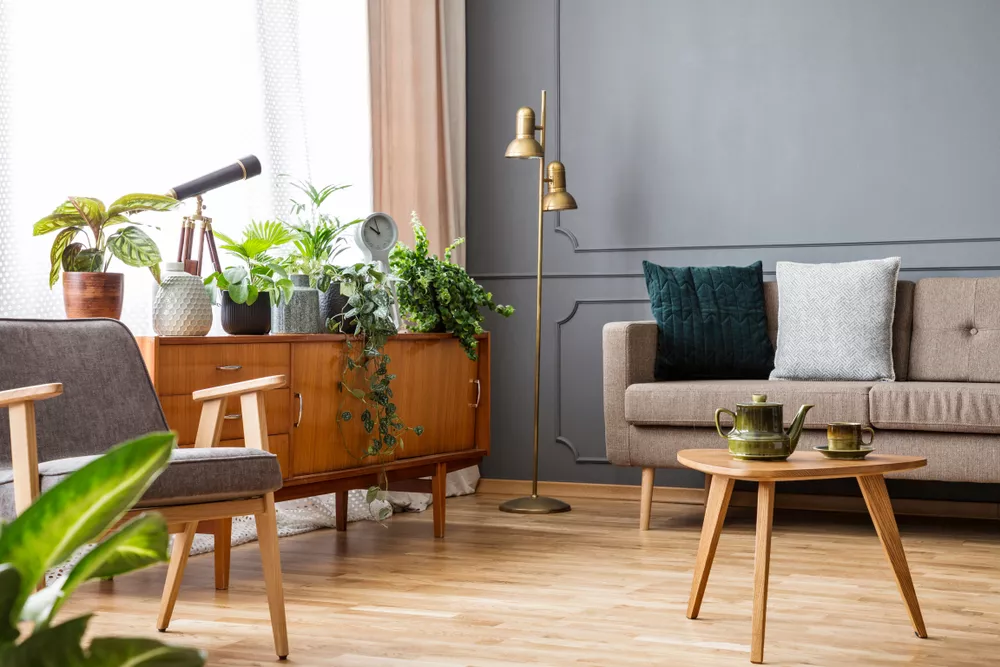
Want to put some vintage finds in your home but not really sure how to antique shop? Whether you’re looking for the perfect piece to complete your living room or searching for a decorative vase to add to your collection, we have tips and advice on what to look for when buying antiques and where to shop. Check out our antique buying guide below to discover the ins and outs!
Photo via @affordablychicart
Before you begin antique shopping, make a list of the items you’re thinking about adding to your home or your collection. This way, you’ll be able to focus on things that you actually need instead of being tempted to buy antique collectibles that don’t have a purpose in your space.
Photo via @infalmouth
Having a little background on design eras and vintage item price points before you go antique shopping is incredibly helpful, as it can help you avoid paying too much for something that’s a replica or from the wrong period. Make sure you talk to local antique dealers, watch videos, and do some reading before you shop so you know how to recognize items, materials, creators, and distinguishable marks.
Photo via @goods_at_the_hoods
Don’t limit yourself by trying to find valuable items at one well-known vintage store. Small local antique shops, thrift stores, estate sales, garage sales, flea markets, antique shows, and even online consignment shops are all places where you can snag awesome antique and vintage finds!
Photo via @thecompound_roundtop
If you’re on the fence about purchasing an item, don’t be afraid to ask questions of the seller—especially if you’re doing your vintage shopping online. An antique dealer might not take a picture from every angle or disclose enough information for you to make a decision. So be sure to get the necessary questions answered before buying something you don’t love or that may need extra restoration work.
Photo via @keeleymckendree
One of the most important tips for antique shopping is to buy items that you’ll actually enjoy having in your home. While you might feel compelled to get a rustic table or some mason jars because they’re “in” right now, these items will cost significantly more since they’re in demand—not to mention, they’ll eventually go out of style. Stick to antiques that fit with your home design style and interests, not just what’s trending.
Photo via @bijoupennflea
The smallest of signs of damage can drastically change the worth of any antique. If there’s something that catches your eye as a potential addition to your collection, pick it up and examine it from every angle. Issues like a lack of support on vintage furniture, broken handles, stained wood, or scratches could help lower the price of the item since it’s no longer in mint condition.
Photo via @7hillsreclamation
Antique shopping for something that’s one of a kind? There are a few signs of provenance (i.e., proof of an item’s history or origin) you can look for to make sure you’re not purchasing an item that was mass-produced. Search the piece for any labels and hallmarks, signatures from the artist, or the makers’ location printed on the bottom of the item. You can also check authenticity with the amount of wear-and-tear on the item or by asking the antique dealer if there’s a certificate of authenticity.
Photo via @ajournalexploration
This is easier said than done, but with extensive research on the piece you’re interested in, you can spot some of the signs that an item isn’t an original. For example, furniture that has been mass-produced will have screws holding wood together, whereas something made by a carpenter will have dovetail joints. Also, if items seem to be in “too perfect” condition, there’s a chance they’re not truly vintage.
Photo via @knellenneka
While it may seem like some antique shops and vintage stores have set prices, it doesn’t hurt to ask if you can go lower with the price. If you’ve done your research and looked through similar items at other stores, you can use item quality and competitor pricing to back up your haggling. You might also be able to strike up a discount if there’s any extra wear and tear on the item.
Photo via @wattsandcogvl
The last thing you want after spending so much time antique shopping is having buyer’s remorse. Rushing into something could result in purchasing a fake item or spending more money than you had anticipated. Remember that finding the most valuable items takes patience, so make sure you shop around at different stores, stop by shops frequently to keep up with price changes, and do thorough research ahead of time.
***
Need more room at home for your antique and vintage finds? Extra Space Storage has convenient facilities throughout the U.S. that can help you get more space. Find self storage units near you!
Moving to Brooklyn with your kids? This New York City borough boasts some great Big…
Extra Space Storage recently opened several self storage locations in various markets across the U.S.,…
Considering a move to Tucson? Old Pueblo has several great suburbs that offer affordable living…
Extra Space Storage is excited to announce the opening of a new facility located at…
Not only is Knoxville one of the most affordable cities to live in the U.S.,…
National Volunteer Week is upon us, making it the ideal opportunity to celebrate Legacy Rivera…
This website uses cookies.